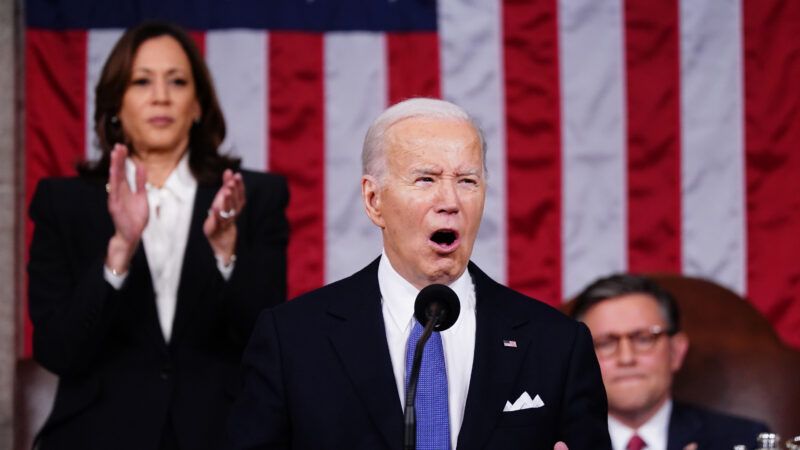Biden Is Wrong About Student Debt Forgiveness
Biden claims that billions in loan forgiveness is "good for the economy," but his plans will end up costing taxpayers almost $500 billion.

"I fixed student loan programs to reduce the burden of student debt for nearly four million Americans," President Biden bragged during his State of the Union address on Thursday night. "Such relief is good for the economy because folks are now able to buy a home, start a business, even start a family."
Despite failing to enact blanket student loan forgiveness, Joe Biden has still managed to forgive more than $130 billion in federal student loans since taking office in 2021—and due to a series of Education Department rule changes, even more loans are set to be forgiven in the coming years.
While Biden lauded his forgiveness scheme as "good for the economy," Biden's student loan reforms are in fact likely to make degrees more expensive to obtain in the coming years.
When the Education Department announced its original plan to forgive up to $20,000 in federal student loans per borrower in 2022, they also ushered in several, less attention-grabbing rule changes to the federal student loan program. Chief among them was a major change to income-driven repayment (IDR), a popular way for lower-income borrowers to repay their loans.
Under the REPAYE plan, previously the most popular IDR plan, borrowers were required to make regular monthly payments of 10 percent of their discretionary income (calculated as earnings above 150 percent of the federal poverty rate) for 20 years in order to receive forgiveness. But in 2022, Biden announced the Education Department would replace the REPAYE plan.
In its place, the Saving on a Valuable Education (SAVE) plan is a significantly more generous alternative, only requiring monthly payments of 5 percent of borrowers' discretionary income (now calculated as earnings above 225 percent of the federal poverty rate), with forgiveness after just 10 years for balances less than $12,000. Late or incomplete payments would still count during the required repayment period, unlike under the REPAYE plan.
While income-driven repayment plans are generally targeted at low-income borrowers who might not be able to afford a traditional repayment plan, the SAVE plan is so generous that it is likely to attract a wide swath of wealthier borrowers. With borrowers required to pay back such a small portion of their loans, universities have a clear incentive to boost prices and encourage students to enroll in the SAVE plan.
"The system has gotten so generous that it's not really a loan anymore," Preston Cooper, a senior fellow at The Foundation for Research on Equal Opportunity told Reason. "It's more like a grant. And I think at that point, you'll start to see colleges saying, 'Hey, students aren't going to have to pay back their loans in full. So why don't we raise our prices, have students take out more loans, and the loans will just get forgiven by taxpayers?'"
In all, the new IDR plan is estimated to cost taxpayers nearly as much as Biden's original attempt at forgiving $475 billion over the next decade (blanket forgiveness was estimated to cost up to $519 billion). While Biden claimed that his recent forgiveness would help swaths of Americans "buy a home start a business even start a family," it certainly isn't typical taxpayers—the majority of whom do not have the benefits of a college degree, or the student loans to match—who will end up benefiting.
Ultimately, Biden's loan forgiveness efforts are best thought of as a purely political attempt to cater to a large portion of the Democratic base. Forgiving student loans does nothing to make it easier to attend college without taking on student loans—or for young Americans to reach the middle class, regardless of their educational path.


Show Comments (20)